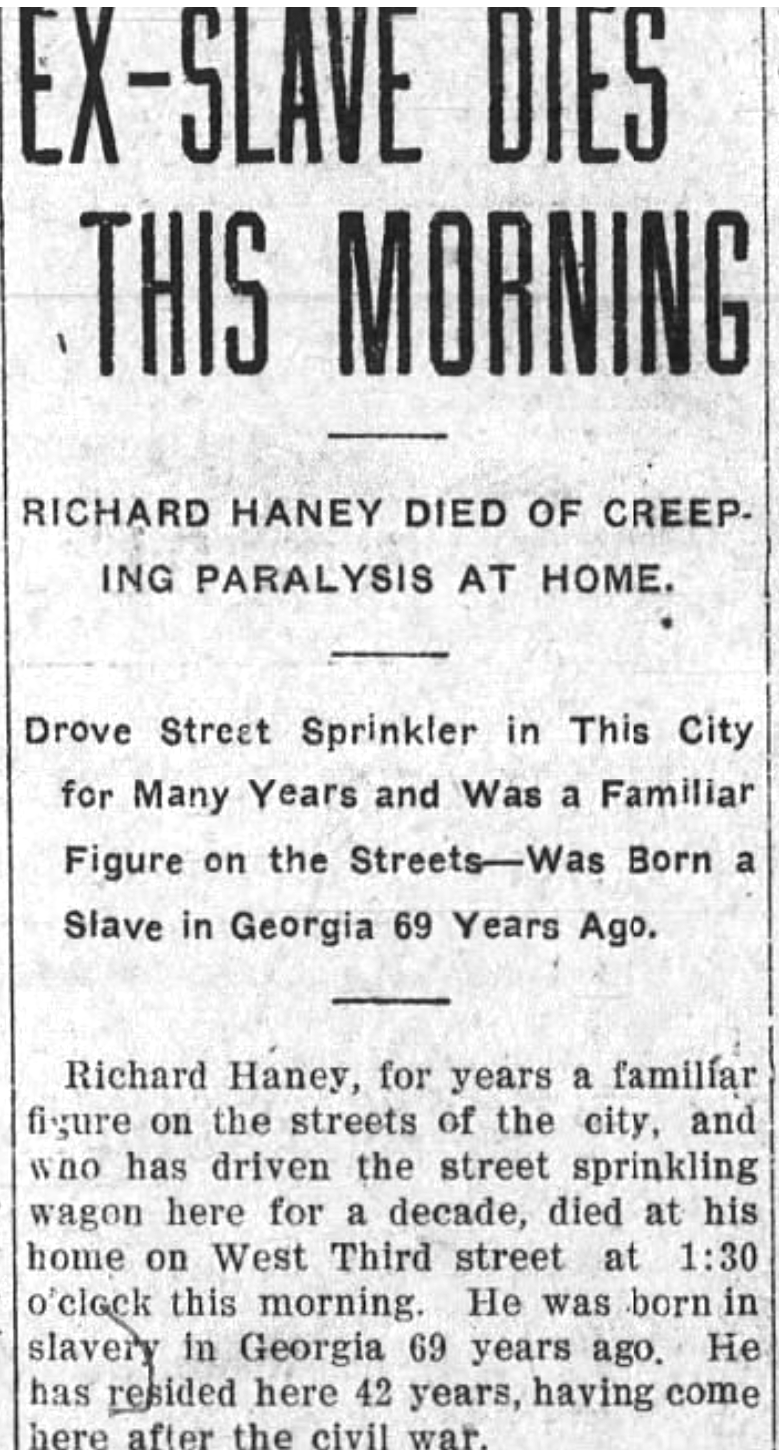
This column by Daniel G. Clark about Alexander Clark (1826-1891) first appeared in the Muscatine Journal on March 22, 2023.
Whose idea was it to move the Alexander Clark House to 203 W. 3rd Street? I will ask Bob Campagna tomorrow evening at the Art Center.
Muscatine Journal, December 5, 1974: “If the price of a vacant lot and relocation costs are right, an Eastern Iowa women’s group will begin efforts next week to save the historic Alexander Clark home from demolition. … Robert Campagna, the city’s low-rent housing administrator, said today the housing commission would assist the group in their efforts.”
With demolition scheduled for February, the article quotes Campagna: “If the house can be moved, we would be happy to see it done.”
Journal, May 1, 1975: “Today, the house is at its new address and West Third Street is once again open to traffic. The Alexander Clark House was moved under the sponsorship of the Alexander G. Clark Historical Society…and makes room for a high rise elderly housing project at the old site.”
Moved less than 200 feet, the 1878 federal-style double-house that had been 123-125 became 203-207. It now occupied the former site of a house demolished in 1971 that was long known as home of the Thompson sisters.
Beulah (1889-1955) and Stella Thompson (1885-1969) inherited it in 1907 from their great-uncle, Richard Haney. It was reported they had “kept house for him of late.” There they resided throughout their lives, their house a center of hospitality for Muscatine’s African American community, the scene of church suppers and at least one ice cream social.
Among residents was the former Neomia Jackson. Much later, her husband Osmond “Oz” Malcolm would represent the ward on city council. His unanimously adopted resolution in 2018 created Alexander Clark Day as a permanent municipal holiday.
Records list Richard Haney as 203 resident from 1891 until 1907, his profession drayman or teamster.
Muscatine News-Tribune, Janunary 11, 1907: “Haney, for years a familiar figure on the streets of the city, and who has driven the street sprinkling wagon here for a decade, died at his home on West Third street at 1:30 o’clock this morning. He was born in slavery in Georgia 69 years ago. He has resided here 42 years, having come here after the civil war. … He was a prominent member of the A.M.E. church.”
News items reveal him active in congregation and community, and Clark’s peer as a public figure. In 1874, Clark addresses a meeting mourning the death of Sen. Charles Sumner “after prayer by Richard Haney.” In 1880, they are listed together in the Garfield and Arthur Club and, in 1884, as members of the Blaine and Logan club.
December 29, 1882: “Grand Union Celebration of the Cities of Davenport, Moline, Rock Island, Rapids City and Muscatine. The Twentieth Anniversary of the Emancipation Proclamation of President Lincoln will be celebrated by the colored people and their friends of the above cities.” Haney is president for the occasion.
June 5, 1885: “Whereas the members and congregation of the A.M.E. church…find their present house of worship unsafe to hold their meetings in, and also too small to accommodate their congregation, they have decided to try and build a new church on the same lot where the old church now stands. This is said to be the oldest church building in Muscatine county, if not the oldest in the State. … They have authorized four to solicit for building purposes: Alexander Clark, Benjamin Matthews, Richard Haney and the pastor.”
June 19, 1885: “The congregation…have determined on the erection of a new church edifice to cost about $1,200 [and] have already subscribed $200 towards this amount, and Rev. W. R. Alexander and Richard Haney have undertaken the work of soliciting subscriptions…. The cause is a worthy one and should be liberally supported by our citizens.”
October 15, 1889: “The meeting of the colored citizens…for the purpose of taking in consideration the condition of our race in the South. R. Haney was appointed chairman.” Clark spoke.
Journal, May 31, 1898, quoting the Oskaloosa Herald: “Richard Haney, of Muscatine, one of the wealthiest and most influential colored citizens of the state, was in the city yesterday. He has been attending the conference and Sunday school meeting at Muchakinock, and returned to his home in Muscatine last evening.”
Journal, January 15, 1907: “The funeral of Richard Haney was held Sunday afternoon at 2:30 o’clock from the A.M.E. church. … The attendance was extremely large and every seat in the church was taken before the service was commenced.”
* * *
“Faces of Hope: Bob Campagna Remembers the Clark House & 1970s Muscatine.”
Last week he wrote on Facebook: “You are invited to the Muscatine Art Center Thursday, March 23, 5:30-6:30pm as I dust off the cobwebs of memory from 1972-77 and recount my remembered view of how the Clark House high rise came to be and how I photographed the original inhabitants.”
Next time: Frederick Douglass packs the hall
Top image: Announcement of Richard Haney’s death, January 1907.
